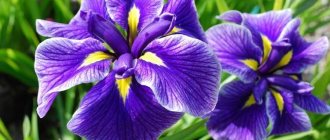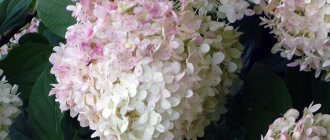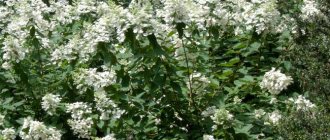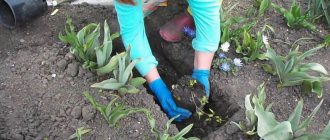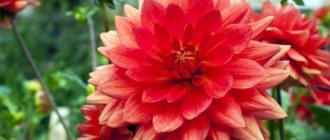Iris (another name is iris) belongs to the iris family. You can find this plant almost everywhere. This perennial has several uses. Firstly, it is used as an ornamental crop. And secondly, it is collected in order to add it to perfume or prepare seasoning from it.
Author of the article
Maxim Sverchkov
Professional biologist and breeder with extensive experience and experience.
What types of irises are there?
The types of iris flowers are divided into many groups. Plants are classified by color and structure of buds, by decorative time and by size.
What colors do irises come in?
Irises, or irises, come in a huge variety of colors. Their petals contain anthocyanins, which are responsible for blue, purple and violet shades, and carotenoids, which determine the presence of orange and yellow tones. The color of flowers depends on the ratio of these substances.
Varietal irises are:
- single-color - red, yellow, pink, blue, purple and orange;
- two-tone - different parts of the bud, fouls and standards, have the same shade, but different intensities;
- bicolor - the upper and lower petals have different colors.
There are also iridescent varieties with a smooth transition of shade, and speckled ones, in which the standards and fouls are decorated with a chaotic marble pattern.
Attention! Typically, the lower lobes of irises are darker than the upper ones. But the opposite situation also occurs, in which case the variety is called reverse.
Bearded and beardless
Bearded irises are the most widely used in horticulture. Their characteristic feature is an additional fleecy petal located at the base of the fouls. Usually its color stands out brightly against the general background. Bearded irises have annual roots. Immediately after flowering, the development of new underground shoots begins, due to which the plant bears buds the next year.
Bearded irises require especially careful watering after flowering.
Beardless irises do not have an additional fluffy petal. Their buds consist only of standards and fouls. The roots of such plants are perennial, due to which representatives of the group are more resilient. Despite the simplified flower structure compared to bearded irises, beardless varieties are also very beautiful.
Prominent representatives of the beardless group are Siberian irises
Dwarf, border
Low-growing dwarf irises are represented by varieties that do not exceed 40 cm in height. The most popular are plants that rise only 20 cm above the ground surface. With their help, it is especially convenient to form borders and miniature compositions in the garden.
Low-growing irises have some advantages, which include:
- brightness of colors;
- abundance of buds;
- modest requirements for growing conditions.
Dwarf varieties set buds especially quickly. They usually begin flowering several weeks earlier than tall irises.
Border irises are highly resistant to fungi and pests
Medium and tall
Irises reaching 40-70 cm above the ground surface are considered medium-sized. They are most often used in flower beds and planted on the sides of garden paths, and are also used for cutting.
Tall varieties rise 70-120 cm above the ground. Their distinctive features include large and complexly structured corrugated buds. Tall varieties are considered the most spectacular, but at the same time they require special protection from the wind, as they can break under its gusts.
Tall irises form several flowers on one shoot
Bulbous
The main feature of this type of garden irises is that their underground part is represented by an elongated bulb surrounded by rudimentary leaves. Externally, the plants differ little from rhizomatous ones. They also have tall or short stems, buds consisting of three standards and three fouls, and long upward-pointing leaves.
It should be noted that bulbous species are classified as true irises only by the international gardening community. In the Russian official classification, only bearded and beardless rhizomatous plants belong to the genus of the same name.
Bulbous irises bloom early and are compact in size.
Dutch
Dutch irises (Iris hollandica) are the most striking representatives of the bulbous group. They usually rise up to 60 cm in height and produce long, straight shoots, on which single buds bloom in June. The hue of Dutch irises can be purple, white, yellow or blue; the petals often have bright specks.
Dutch iris does not create problems when growing and is easily propagated by baby bulbs
Important! Bulbous Dutch varieties have low frost resistance and require careful shelter in cold regions.
Siberian
Beardless Siberian irises (Iris sibirica) are highly frost-resistant and love moist, slightly acidic soils. They bloom from May to July and bear medium-sized flowers of white, blue or purple hue, 2-3 pieces on each shoot.
Siberian irises develop best in full sun on fertile soil.
Japanese
Japanese irises (Iris japonica) are another member of the beardless group. They usually rise no more than 1 m, tolerate cold well, but do not like waterlogging. Plants require neutral soil. Features of Japanese irises include slightly flattened inflorescences with small central petals, white, dark red or blue-violet in hue.
Japanese irises bloom from July to August
Swamp
The beautiful marsh or calamus iris (Iris pseudacorus) is distinguished by the bright yellow color of its buds. It usually rises 60-150 cm above the ground, most often growing along the banks of rivers and lakes or directly in water at a depth of 40 cm. One marsh iris can produce up to 15 buds.
Swamp iris blooms from May to July
Reproduction methods
Gardeners use the following propagation methods:
- division of rhizomes;
- use of daughter bulbs;
- planting seeds.
Propagation by dividing rhizomes
This process is carried out during plant transplantation, either before the formation of buds or after the flowering period. In order to reproduce, plants are removed from the ground and the substrate is removed from the roots.
Using a sharp, disinfected knife, it is necessary to cut the rhizomes, leaving each part with a developed root system, a renewal bud and a green above-ground part.
The cut areas must be treated with charcoal and dried for 3-4 hours.
The roots should be cut to 1/3 of their length.
The cuttings are planted in prepared soil. Whether the division process was successful or not can be judged by the signs of new growth. When the divided plant has at least 7 leaves, the young iris will be able to form a peduncle.
Reproduction by daughter bulbs
This method of propagation involves the separation of daughter bulbs from the mother bulbs during the process of transplanting adult irises. For propagation, healthy bulbs are used, without signs of damage or disease.
Propagation by seeds
This is a rather labor-intensive and ineffective method of propagation, since the process of seed germination can take about 2 years. Plants that have been grown from seed usually begin to flower at two years of age.
Before planting the seeds, they should be lightly rubbed with sandpaper: this will help them germinate faster and ensure a better supply of nutrients.
Seedlings should be kept in conditions close to greenhouse conditions, covered with glass and regularly moistened with a spray bottle.
Large hybrid varieties of irises
Tall irises require more careful care than dwarf varieties. However, they look especially impressive on the site and are therefore very popular.
Bushwhacked
The beautiful tall iris blooms in late July or early August. It has corrugated buds with brown-gold upper petals and dark lilac foils; the variety's beards are bright orange. It looks impressive in sunny areas and attracts attention in any flower bed.
Iris Bushwhacked reaches 1 m above the ground
Ambrosie
The late variety of iris bears large buds up to 17 cm in diameter. The coloring of the flower is monochromatic, purple-pink. A bronzed beard is noticeable at the base of the fouls. The buds have an attractive texture and a corrugated edge; the flower stalks rise up to 85 cm.
Iris Ambrosie blooms in midsummer
Sea Power
A bright tall iris up to 1 m has flowers with spectacular corrugation along the edge. The standards and fouls of the plant are bell-blue, rich, the beard is white-blue with a slight lemon tint. The variety enters the decorative period in June.
Blue iris Sea Power looks spectacular in compositions with yellow flowers
Ghost Train
A tall iris with an unusual black and purple color produces large buds of 7-9 pieces on strong peduncles. The fluffy beard almost blends in color with the petals, but has a slight blue tint. The variety blooms in early June and remains decorative for 2-3 weeks.
Iris Geust Train rises to 95 cm
Daring Deception
This beautiful iris variety has purple ruffled fouls and white standards. An orange beard stands out as a bright spot in the middle. The variety blooms in June and emits a pleasant light aroma. It reaches a height of 90 cm.
Iris Darin Disception has received numerous awards and honorable mentions
Diseases and pests
The more elegant and colorful the flowers of irises, the more susceptible they are to disease and pests. To maintain plant health, it is necessary to follow the rules of care and constantly monitor the condition of the plants. Having detected the problem in a timely manner, the gardener can easily deal with it, saving the life of his plants.
Irises can suffer from various types of rot, including fusarium. To prevent the disease from spreading to all plants, immediately after the problem is discovered, diseased specimens should be dug up and burned. For prevention, the roots of healthy flowers are treated with a 2% fungicide solution.
Irises are often attacked by thrips. These insects harm the flower by destroying the pigment cells in the leaves, as a result of which the plant stops photosynthesizing. Most often, thrips infect plants during dry periods. You can fight the parasite with the chemical malathion. There is also a home method for getting rid of thrips: the plants must be treated with a solution consisting of 100 grams of tobacco and 10 grams of grated laundry soap, dissolved in 1 liter of water.
Bright flowers attract various insects. Pests that attack irises include worms that feed on the base of flower stalks. To protect irises from worm attacks, plants must be treated twice with a 10% karbofos solution during the growing season. Between treatments with this antidote you should take a break of one week.
Another pest that a gardener may encounter while growing irises is the slug. Try to get rid of the parasite in the following way: place wet rags between the leaves of the iris bushes, which the slugs will mistake for shelter. Thus, simply folding a rag can easily get rid of a large number of slugs.
The best re-blooming varieties of irises
Varieties of irises with photographs and names are represented mainly by plants that bloom once per season. But some species are able to bloom again in the fall if the weather and growing conditions are favorable.
Immortality
The repeat-blooming variety blooms for the first time in May, and for the second time in August or early September. It bears white buds with a yellow beard, large and bright. The height rises on average to 1 m.
The Immortality variety has good frost resistance and is suitable for northern regions
Jennifer Rebecca
An exquisite variety with fringed pink buds rises 80 cm above the ground surface. The shoots are strong, although they still need shelter from the wind. The beards of iris flowers are orange and bright; in the garden the variety looks attractive and impressive.
Iris Jennifer Rebecca re-blooms in early fall
Mother Earth
The single-color iris is painted in a lilac-pink hue, but the tone of the lower fouls is brighter. The beard of the bud is yellow, and golden inclusions are also visible in the center of the petals. On one shoot up to 90 cm there are up to nine flowers.
The Mother Earth iris blooms in June and re-blooms in September.
Harvest of Memories
The iris variety produces monochromatic, muted yellow buds up to 15 cm in diameter with a golden beard. The plant is tall, blooms for the first time at the end of May and can bloom again in August. Looks good in sunny areas and light shade.
Iris Harvest of Memories rises up to 80 cm above the ground
Autumn Tryst
An unusually colored iris bears buds with petals that are pale lilac in the middle and blue-violet at the edges. It is often used in group plantings in flower beds, suitable for alpine slides and flowerpots, and stands for a long time when cut. The variety blooms in early summer, and if the weather is good, the iris can bloom again at the end of August.
Iris Autumn Date reaches 80 cm in height
Possible problems
When growing irises, gardeners often encounter difficulties caused by voles. They completely destroy the bulbs. You can protect plants from rodents by planting bulbs in metal baskets.
Container for protecting bulbous flowers from rodents
Irises may stop growing. Most often this problem occurs due to the age of the bushes. In this situation, old plants should be rejuvenated: the strongest and healthiest rhizomes with developed buds should be selected for further cultivation.
Remontant varieties of irises
Decorative irises decorate any garden, and their wilting is always regrettable. Therefore, remontant varieties that are capable of blooming again shortly before the cold weather are of interest.
Rosalie Figge
A dark iris up to 80 cm with blue buds that sparkle beautifully in the sunlight, blooms in June or July. With good care, it can bear flowers again in August or early September. Near the beard of the buds, small white inclusions are noticeable, which give the variety a particularly interesting appearance.
The Rosalie Fiji variety is well suited for cutting and used in bouquets.
Pagan Dance
A medium-sized variety up to 70 cm bears dark lilac buds in May. Looks especially beautiful in combination with yellow and orange perennials. May re-bloom at the end of September or October.
Iris Pagan Dance is able to remain decorative until frost
Here's Egein (What Again)
The beautiful dwarf iris has blue upper standards and straw-yellow fouls with a brown dusting. The beards of the flowers are blue-blue. The height of the shoots is on average 25 cm, the plant is well suited for borders.
Iris Vot Egein blooms in July and blooms again in autumn
English Charm
The variety has apricot-reddish fouls and creamy standards with lemon veins and emits a light vanilla aroma. The beard on the buds is bright orange-red, but against the general background it does not attract much attention. The variety enters the decorative period in July, sometimes blooming again in August.
Attention! English Charm tolerates winter temperatures down to -40°C and is suitable for northern regions.
Iris English Charm rises up to 85 cm above the ground
Cloud Ballet
An openwork iris with a slight sweet scent rises 85 cm above the ground. It bears bluish-blue ruffled buds, the center of the petals is white, and the beard is bright yellow. Decorates the garden in early summer; in warm weather, it often blooms again in September.
The Cloud Ballet variety prefers sunny areas and looks especially decorative in bright light
Description
Iris (sometimes called “killer whale” or “cockerel”) is a perennial plant of the iris family. It grows all over our planet in a variety of climatic conditions. Irises have been known to mankind for about 4000 years.
Since ancient times, irises have been associated with the name of the goddess Iris. Even their name translates as “rainbow”, of which she was the deity. There are quite a few legends where this unusual flower appears. So one, for example, says that when Prometheus brought fire to people, a rainbow appeared in the sky, and after it the whole earth was strewn with irises.
Plants have two types of shoots - vegetative (perennial) and generative (annual). One of the features of the plant is the presence of underground rhizomes, which come out as the iris matures.
Iris also has single flowers, each of which has 6 petals. The leaves are located at the base, flat in shape, somewhat reminiscent of a sword. Irises are actively used in the perfume and medical industries.
The most beautiful new varieties of irises
Varieties of iris flowers with photos are of increased interest from breeders. New varieties with unusual, attractive shades regularly appear on the gardening market.
Ruby Moon
Tall iris 90 cm is suitable for flower beds and flowering hedges. The petals are strongly corrugated and have an orange-yellow fluffy beard. The buds are bright yellow, but along the edges of the follicles there is a noticeable smoky purple coating in the form of a border.
Ruby Moon variety blooms in midsummer
Brazen Beauty
A very beautiful garden variety combines soft cream and deep pink tones. The beard at the base of the iris's follicles is dark red-orange, the petals are lacy and strongly corrugated. The variety blooms in early summer.
The height of the peduncles of the Brazen Beauty iris is about 90 cm
Black Tie Affair
Intense black velvety varietal iris with corrugated petals bears large buds on tall peduncles up to 90 cm. It blooms late in mid-summer. When planted in the sun, it acquires a subtle emerald hue.
Iris Black Tai Affair remains attractive for a month
Greenland
The dwarf iris Greenland reaches no more than 30 cm in height. It has golden-yellow buds with wine specks on the petals and red-violet stripes on the ridges. The beards of the variety are tricolor, orange-yellow-white. There are also light chaotic spots on the buds.
Early variety Greenland blooms from April to early summer
Blazing Garnet
A compact variety of iris with a height of no more than 30-40 cm produces garnet-red buds with a bright yellow beard. You can also notice golden and pink tones in the color. The surface of the petals is smooth, satiny, while the edges are strongly corrugated.
Attention! The variety can produce 3-4 buds on one peduncle.
Iris Blazin Garnet blooms in June and July
History of invention
We can say that toffee is a dessert that occupies an intermediate state between caramel and candy.
And if the history of the appearance of caramel is no secret, then with toffee everything is somewhat more complicated. It is impossible to say for sure who invented it. The French appropriate the right of invention to themselves, the Americans to themselves. It is only known that toffees have been extremely popular in France since the 15th century, although the French knew them then under the name “taffy”. And American confectioners claim that their ancestors invented toffee, since they were the first to cook caramel in special deep copper cauldrons. In Russia, iris appeared at the beginning of the 20th century, when a French pastry chef reproduced them according to a French recipe in St. Petersburg. Not sure that the French name “taffy” would take root on Russian soil, he came up with a cunning move: he called the sweets iris, since they seemed to him as delicate as the petals of the flower of the same name.
Iris can be bought not only in the form of wrapped candies, but also in bars
Border varieties of irises
Miniature border irises are extremely hardy and require little care. You can find a place for them in any garden, which is why dwarf varieties are in particular demand.
Beau
The miniature variety has purple standards and dark purple fouls with a lighter edge. The beard of the buds is light blue, densely pubescent. The height of the plant is only about 30 cm, the variety is well suited for borders.
Iris Beau blooms in late spring
Carats
The compact iris, up to 20 cm in height, has golden upper and lower lobes. The standards are slightly brighter than the fouls; the beard of the variety is white and yellow. The flower looks good in illuminated areas of the garden and harmoniously combines with light and dark perennials.
Iris Carats blooms in July
Chanted
A dwarf flower up to 20 cm above the ground has soft pink petals with a bright blue beard in the middle and the same veins under it. Suitable for breeding in northern regions, as it easily tolerates frost and grows quickly and actively.
Chanted iris blooms in May
Demon
Iris with a rich wine-red hue of petals and blue-violet beards reaches 15-20 cm above ground level. Flowering begins at the end of May. Iris grows well in dry areas, has high vitality and does not require special care.
Flowers of the Demon variety reach 7 cm in diameter
Double Lament
The dark purple variety with blue beards blooms in mid-June or early July. Looks good in miniature compositions and as part of borders.
Iris Double Lament rises up to 30 cm above the ground
Varieties of irises with a strong smell
Irises are valued primarily for their bright, spectacular flowering and unusual bud structure. But some varieties can additionally please you with a strong, pleasant aroma.
Who need a Prince (Who need a Prince)
A tall variety of iris up to 1 m has yellow upper lobes and violet-pink fouls. A bright lemon beard is visible in the center of the flower. The buds emit a strong, pleasant aroma during the decorative period; the variety can be planted near the house or garden gazebo.
The Hu nid e Prince variety blooms in June
Concord Crush
A lush iris up to 1 m high spreads 40 cm in diameter. Bears up to ten buds on one peduncle; the shade of the petals is blue-violet with white veins at the base of the lower lobes. It has a delicate sweet aroma.
The Concord Crush variety blooms from May to June
Katharine Hodgkin
This miniature iris variety, up to only 15 cm in height, has large blue buds with dark blue specks and yellow stripes in the central part of the petals. Used in borders and lower tiers of flower beds, grows well in brightly lit areas.
The variety Katharina Hodgkin emits a fresh and sweet rich aroma
Harmony
Iris Harmony has a rich dark blue color. There are bright white veins and yellow stripes in the center of the petals. During the flowering period, it emits a light sweet smell and develops equally well in the sun and in partial shade.
Variety Harmony grows up to 20 cm above the ground
Dear Delight
The iris with pale blue petals and a white spot at the base of the follicles stretches to an average of 70 cm. The blossoming buds emit a pleasant and unobtrusive sweet aroma. The variety tolerates frosts well down to -35 °C and prefers sunny areas of the garden.
Iris Die Dilight blooms in June
